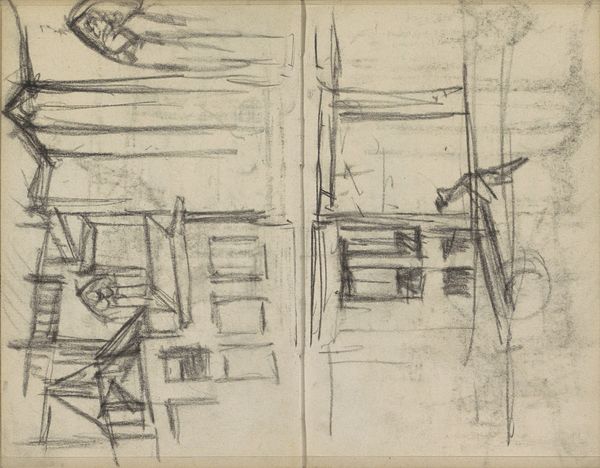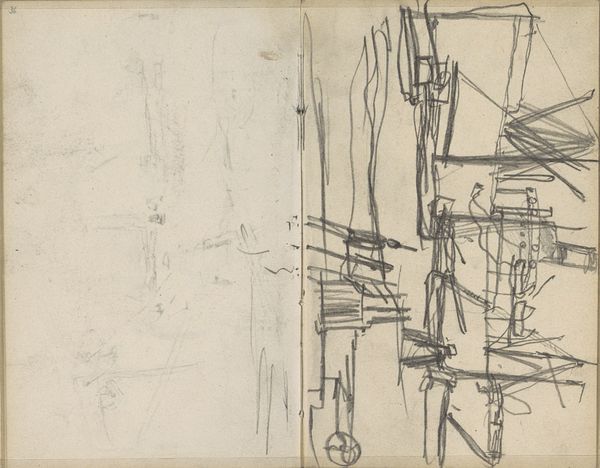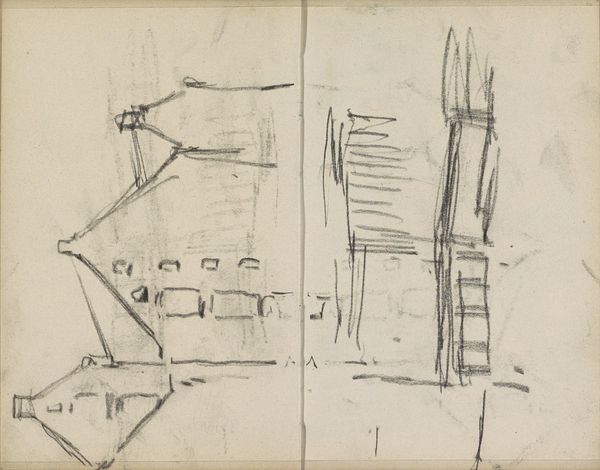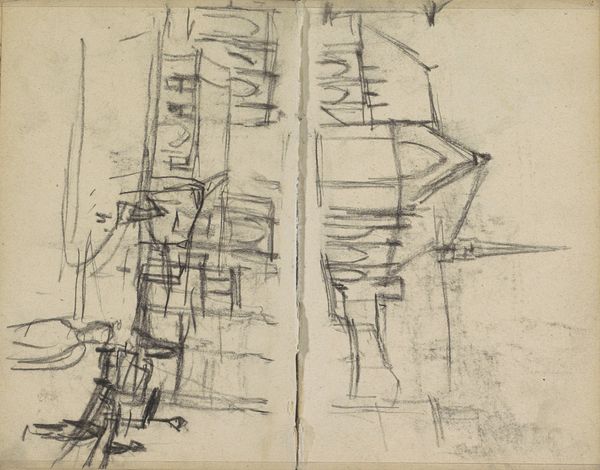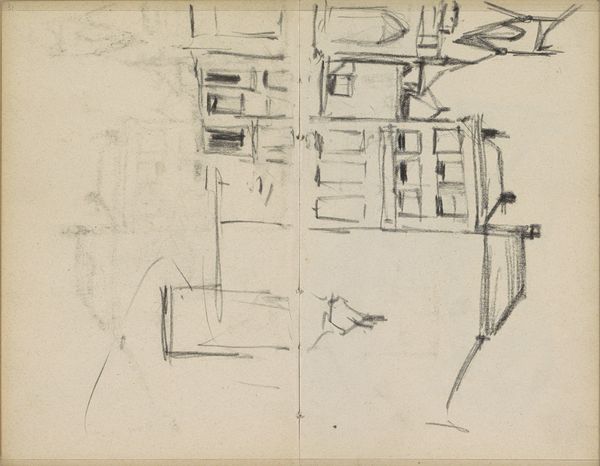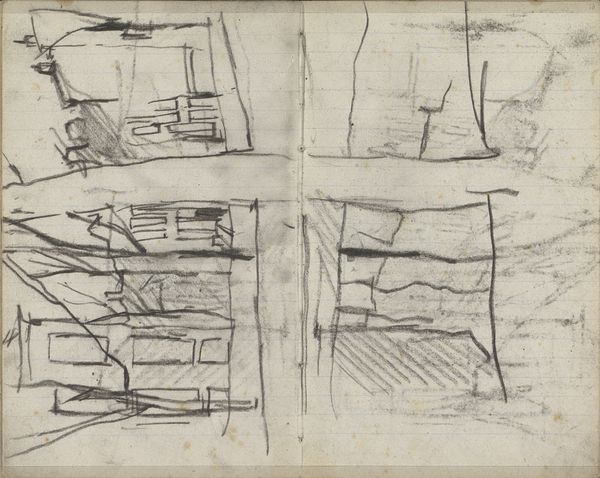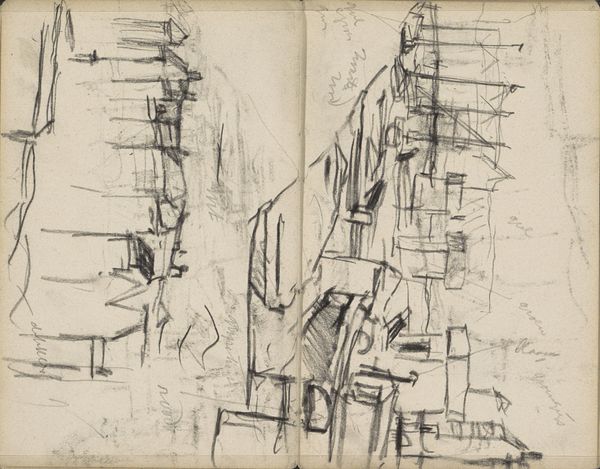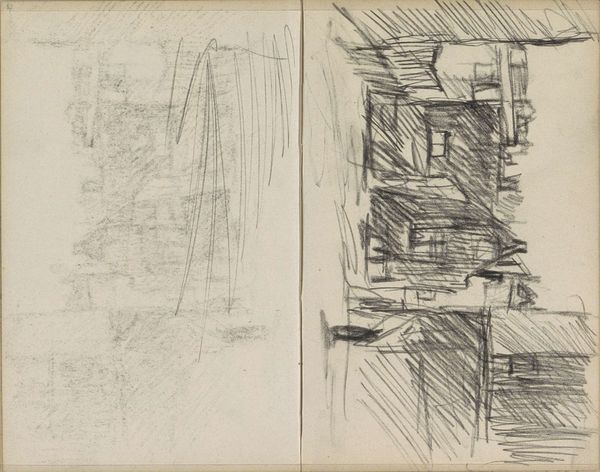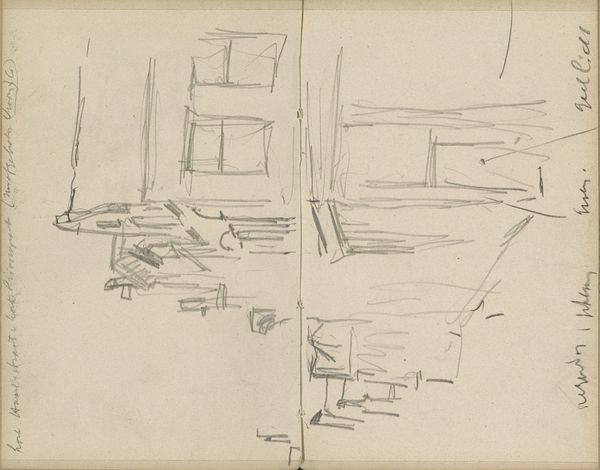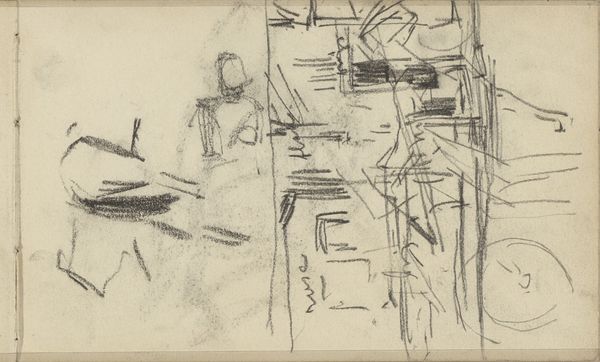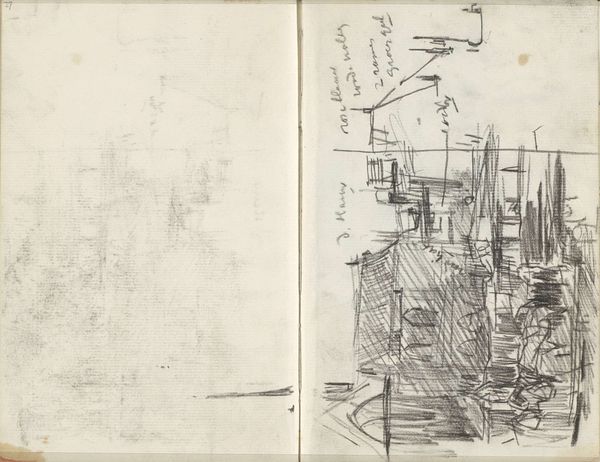
Copyright: Rijks Museum: Open Domain
Curator: Here we have George Hendrik Breitner's "Gezicht in Amsterdam," a charcoal drawing from circa 1891-1894. Editor: My initial thought is its rapidness. It's like a fleeting impression, a sketch barely tethered to the page. What do you make of it? Curator: I agree. It's very immediate, offering a glimpse into Breitner's working process, stripping down the landscape to its basic structural components and raw materials: paper and charcoal. This wasn’t a highly refined commissioned work, but part of an intimate and personal exploration. Editor: It speaks to the rapid industrialization of Amsterdam at the time. Breitner documented the changing city, the construction sites and the lives of ordinary people caught within this process. His impressionist style then seems a perfect tool to capture that specific atmosphere, don’t you think? Curator: Exactly! Consider the labor involved in urban expansion at that time, and also the cost and labor required to create works like this, or more polished paintings for the wealthy. Here he's utilizing humble materials and direct means to address his subject—an inherently social process. Editor: This raw quality gives it such a sense of honesty, perhaps challenging the established styles and traditional depiction of landscapes during this period. The unfinished aesthetic perhaps mirroring the disrupted social landscape he witnessed and experienced in Amsterdam during a pivotal period of industrial and social transition. Curator: Breitner made deliberate artistic choices rooted in accessibility, by focusing on available resources, depicting subjects usually overlooked in traditional academic landscape paintings, such as labor or urban views. His pieces were meant for a growing urban class and he focused his artistic labor towards them. Editor: And how empowering to capture a modern experience. This raw style seems an effective means to explore broader questions surrounding Dutch identity and the seismic shifts felt during the industrial era. A sketch can speak volumes! Curator: It absolutely can! Seeing art this way, connected to the economic and material conditions of its creation, lets us rethink art's role as part of wider cultural production. Editor: I completely agree, understanding art’s interplay within historical movements allows us to interpret how historical narratives affect identity and experiences during any time.
Comments
No comments
Be the first to comment and join the conversation on the ultimate creative platform.
